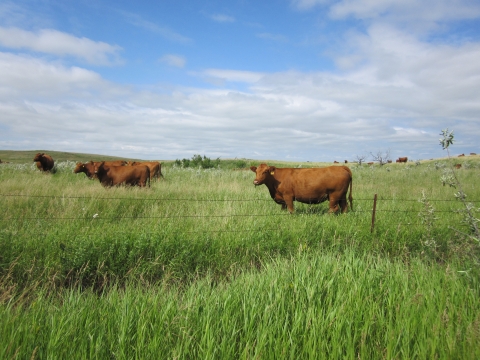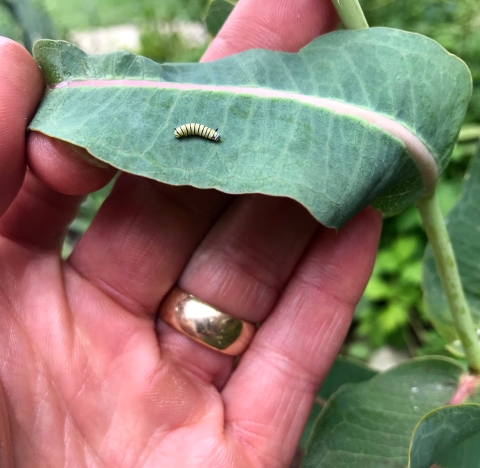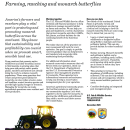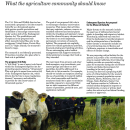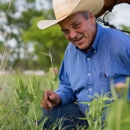Agriculture and ranching
America’s farmers and ranchers play a vital part in protecting and promoting monarch butterflies across the continent. They know the importance of leaving the land in better shape than they found it. They know that sustainability and profitability can coexist when we promote smart, sensible land use. From practices that promote native wildflowers and their beneficial insects in field margins to grazing plans that help grow and protect native prairie plants, ranchers and farmers are already doing the work to enhance monarch populations. These same practices that create and protect good habitat for monarchs can also reduce erosion, make soil healthier, control invasive species invasive species
An invasive species is any plant or animal that has spread or been introduced into a new area where they are, or could, cause harm to the environment, economy, or human, animal, or plant health. Their unwelcome presence can destroy ecosystems and cost millions of dollars.
Learn more about invasive species and provide high-quality forage for livestock. Managing for monarchs can make agricultural operations more resilient and more productive.
What does the proposed 4(d) rule mean for me? If there are monarchs present on my land, will the rule require a change in operations?
The goal of our proposed 4(d) rule is to encourage voluntary conservation measures. That means that activities that may maintain, enhance, remove or establish milkweed and nectar plants within the breeding and migratory range would be allowed in many circumstances. As long as these activities do not result in conversion of native or naturalized grassland, shrubland or forested habitat, they likely can occur as normal. We are encouraging active habitat management that supports monarchs while ensuring landowners have the flexibility to manage land for other uses, like farming and grazing.
Are there new requirements for me? Will I still be able to use pesticides and/or insecticides as part of my farming operations?
There are no new requirements in our proposed rule, though that may change after we receive input from the public. We are seeking comments about the proposed rule to help us shape protective regulations under the Endangered Species Act. All comments will be addressed and may be incorporated into the final rule.
Because we are soliciting public input on this, we do not know how pesticides may be addressed in the final rule. We want input from growers and other land managers. For example, should we include an exception allowing the use of pesticides in monarch habitat? If so, what reasonable and feasible protective measures would be in place to minimize pesticide exposure to monarchs? How can we tailor measures for different classes of pesticides, pesticide uses, and application methods? Please weigh in!
If my land management practices affect monarchs and their habitat, will I be in trouble with the law?
Whether or not monarchs are present on your land at some point during the year, most actions that may result in incidental take by a land manager, agricultural or otherwise, are allowable and not prohibited by the proposed rule. Also, please note that this is a proposal and any final rule would not take effect until 2026 at the earliest.
How to get involved
The U.S. Fish and Wildlife Service is here to help landowners integrate monarch conservation into successful farming operations. To find the monarch conservation measures that will fit best with your operation, check out the Farm Service Agency's Conservation Reserve Program, the Natural Resources Conservation Service's monarch butterfly program and the U.S. Environmental Protection Agency's best management practices for monarchs. These agencies have developed and collected in-depth guidance that you can start implementing right away.
We realize that not all the practices we may recommend will work for every operation. Our goal is simply to provide concrete guidance that can help farmers and ranchers help monarchs while maintaining farm profitability.
America’s agricultural community grows the food that sustains us and brings our communities together. Let’s work together to do the same for monarchs by growing the wildflowers and milkweed they need to survive and thrive across the United States.

